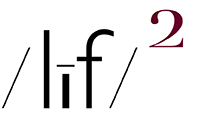all photos ~ (embiggenable)
WHEN IT WAS MENTIONED TO WILLIAM EGGLESTON THAT the design of most of his pictures seemed to radiate from a central, circular core, he responded that this was true, since the pictures were based compositionally on the Confederate flag. This response, in the opinion of John Szarkowki, was…
“…presumably improvised and unresponsive, of interest only as an illustration of the lengths to which artists sometimes go to frustrate rational analysis of their work, as though they fear it might prove antidote to their magic.”
Re: rational analysis - it is the provenance of art critics and academics to delve into the rational analysis-the techniques-and the art theories-the aesthetics-employed in the making of any given piece of art. In most cases the rational analysis is intended to assist a viewer of any given piece of art in more fully understanding, aka: the ability to “interpret” and discover meaning (aka: content”)-and appreciating it. Or, in some cases, to assist a viewer in recognizing that a piece of art is actually a piece of crap.
In any event, whatever the merit(s) of rational analysis might be to some, one prevalent demerit, iMo, is the constant ascription to artists-PhotographyDivision-of consciously / deliberately using techniques and aesthetic devices in the making of their pictures. An assertion that is based upon the ignorance of critics and academics who, for the most part, are not practicing and/or accomplished artists themselves. That is to write, that based upon their voluminous technique and art theory expertise, they are predisposed to miss the forest for the trees.
Re: magic - To continue with the “forest” metaphor - the most interesting picture forests-in this discussion Photography, Fine Art Division-are germinated and fostered by picture makers who tend, on the whole, to understand that art theory and technique-other than what they need to make their vision visible-are nothing more than a hill of beans in their world.
iMo long-considered opinion, their “magic” springs fully formed and, seemingly, unbidden from their innate, personal vision-literally and figuratively how they see the world. Simply written, it’s all about the pictures…
“Every artist I suppose has a sense of what they think has been the importance of their work. But to ask them to define it is not really a fair question. My real answer would be, the answer is on the wall.” ~ Paul Strand
All of the above written, and getting back to the idea of fearing that rational analysis “might prove antidote to their magic”… I get it. Breaking down one’s vision-in this case, so called “magic”-into its individual components might, like Humpty Dumpty after the fall, be never able to be put back together again.
That’s cuz true vision is not formulaic. It is not a collection of parts glued together to create a operations manual. Rather, vision, like a photograph itself, it is an organically synthesized whole that is somewhat akin to magic-i.e. possessing the power of apparently influencing the course of (picture making) events by use of mysterious forces.
So, iMo, it is best to embrace the magic and go with its flow.
PS 2 new galleries - POLES and EYES DOWNCAST - on my WORK page.
